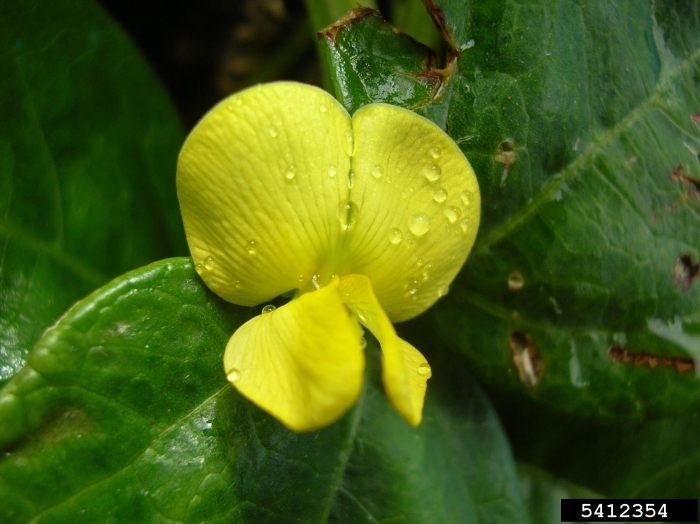Notched Cowpea
(Vigna marina)
Notched Cowpea (Vigna marina)
/
/

Forest & Kim Starr, Starr Environmental, Bugwood.org
CC BY 3.0
Image By:
Forest & Kim Starr, Starr Environmental, Bugwood.org
Recorded By:
Copyright:
CC BY 3.0
Copyright Notice:
Photo by: Forest & Kim Starr, Starr Environmental, Bugwood.org | License Type: CC BY 3.0 | License URL: https://creativecommons.org/licenses/by/3.0 | Uploader: Anna Frodesiak | Publisher: Wikimedia Commons | Title: Vigna_marina_(aka_beach_pea,_nanea,_notched_cowpea)_-_02.jpg |





























Estimated Native Range
Summary
Vigna marina, commonly known as Notched Cowpea, is a perennial vine or herbaceous plant native to coastal sand dunes, saline soils, and beach forests in Tropical Asia, Africa, and Australasia. It exhibits a prostrate, creeping growth habit with stems that can extend up to 3 meters in length, often displaying purplish stripes. The leaves are trifoliate, typical of the Fabaceae family. Notched Cowpea produces clusters of yellow flowers, each 15 to 18 mm long, around the tip of the stalk. Flowering occurs throughout the year, peaking in autumn and early winter. While the flowers are not fragrant, they are quite showy and attract pollinators. The pods are oblong, containing peas that are circular to oblong in shape and greyish-brown when mature. Upon ripening, the pods open and twist to release the seeds.
Notched Cowpea is valued for its ability to thrive in saline environments, making it suitable for coastal landscaping and erosion control. Its salt tolerance and vigorous growth habit allow it to stabilize sandy soils effectively. It is also used in tropical and subtropical gardens for ground cover or as a trailing vine in hanging baskets. This species is relatively low-maintenance, requiring minimal water once established and preferring well-drained soils. It can grow in full sun to part shade, which provides flexibility in garden design. Light scarification of the seeds can improve germination rates. However, gardeners should be cautious as it can become invasive in some regions outside its native range, spreading rapidly and outcompeting local flora.CC BY-SA 4.0
Notched Cowpea is valued for its ability to thrive in saline environments, making it suitable for coastal landscaping and erosion control. Its salt tolerance and vigorous growth habit allow it to stabilize sandy soils effectively. It is also used in tropical and subtropical gardens for ground cover or as a trailing vine in hanging baskets. This species is relatively low-maintenance, requiring minimal water once established and preferring well-drained soils. It can grow in full sun to part shade, which provides flexibility in garden design. Light scarification of the seeds can improve germination rates. However, gardeners should be cautious as it can become invasive in some regions outside its native range, spreading rapidly and outcompeting local flora.CC BY-SA 4.0
Plant Description
- Plant Type: Vine, Herb
- Height: 7-10 feet
- Width: 7-10 feet
- Growth Rate: Moderate
- Flower Color: Yellow
- Flowering Season: Spring
- Leaf Retention: Deciduous
Growth Requirements
- Sun: Full Sun, Part Shade
- Water: Low
- Drainage: Fast
Common Uses
Bird Garden, Butterfly Garden, Drought Tolerant, Low Maintenance, Salt Tolerant
Natural Habitat
Native to coastal sand dunes, saline soils, and beach forests in Tropical Asia, Africa, and Australasia
Other Names
Common Names: Beach Pea, Nanea, Field Bean, Shore Bean, Haricot Du Bord De Mer, Liane Ronde, Pois Marron, Karal Li-Me, Kodippayaru, Batatarana
Scientific Names: , Vigna marina, Vigna lutea, Vigna oblonga, Vigna marina subsp. oblonga, Vigna retusa, Vigna rotundifolia, Dolichos luteus, Phaseolus obovatus, Scytalis retusa
GBIF Accepted Name: Vigna marina (Burm.) Merr.